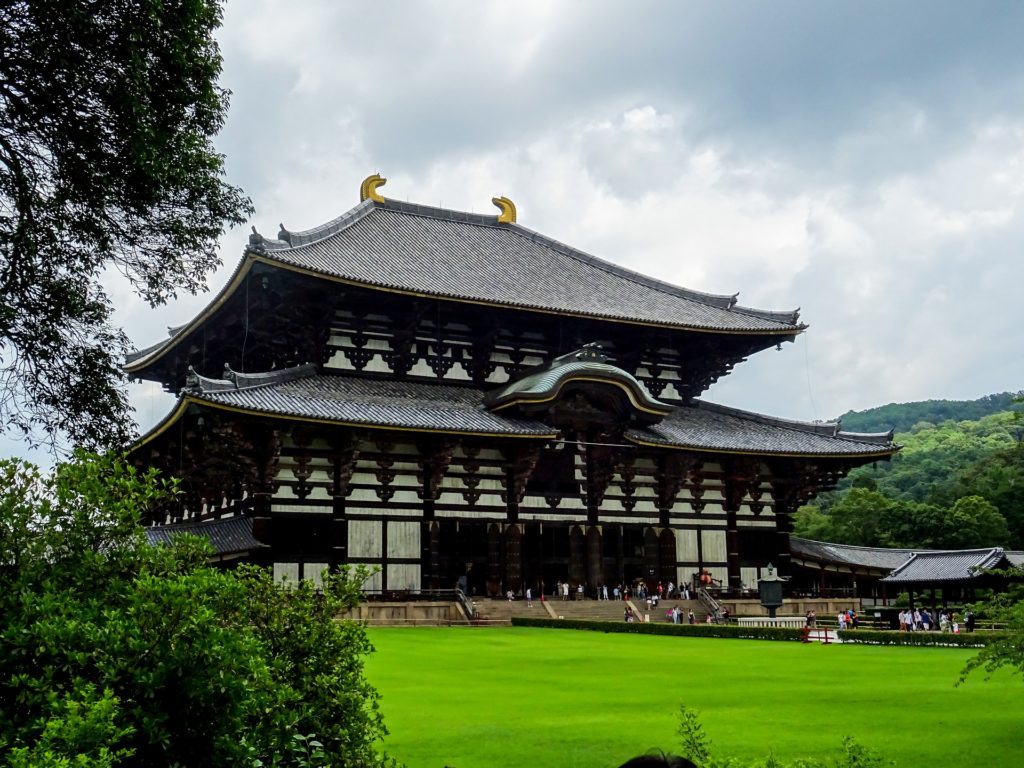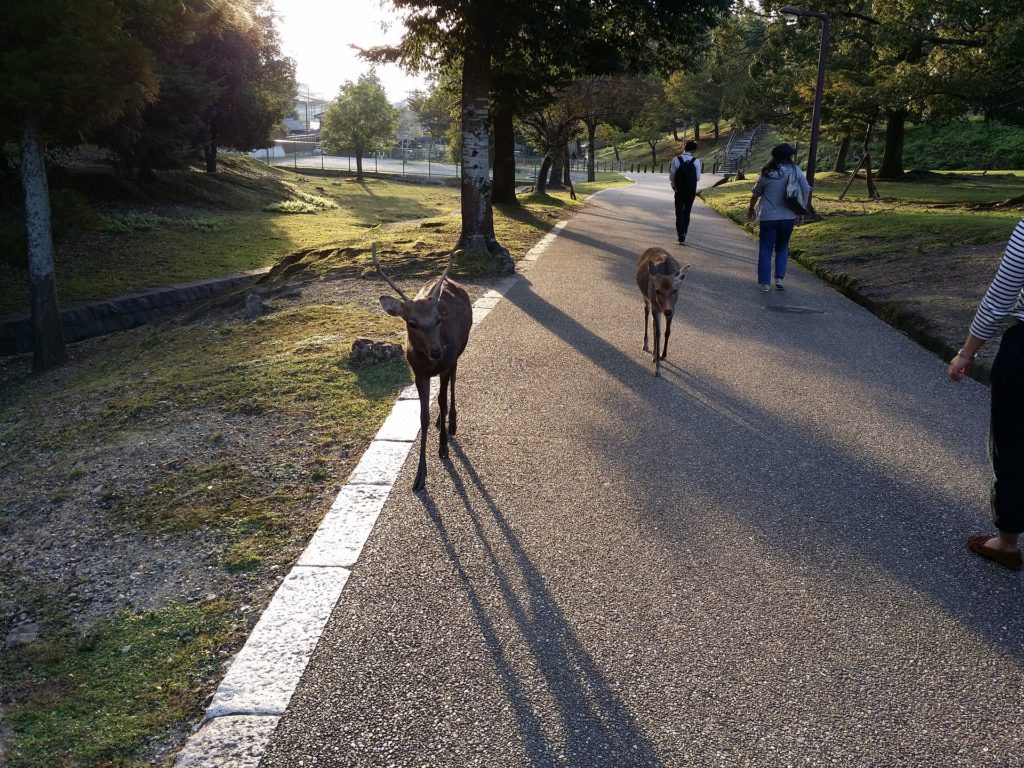The capital city of Kansai region’s Nara Prefecture, Nara is an old and historic city that is home to some of the oldest and most notable monuments in Japanese history. It served as the country’s capital from 710 to 794, and is currently the focal point of the region’s government, economy, and commerce.
How To Get There
Nara is well-connected to the other major cities in Japan via trains.
If coming from Tokyo, take a two-and-a-half-hour long Shinkansen ride from Tokyo Station to Kyoto Station, and then transfer to either a rapid train or a limited express train for a 35-to-45-minute ride to Nara Station.
If travelling from Osaka, you can catch a rapid train at Osaka Station going to Nara Station for a 45-minute one-way journey. You can also depart from Osaka-Namba Station and take a 30-minute limited express train ride to Nara Station.
Top Attractions

Todaiji Temple
Nara’s most famous temple, Todaiiji, is an 8th century Buddhist temple recognized as the primary temple of all Japanese Buddhist temples. It houses the biggest wooden building in the world, known as the Daibutsuden or Big Buddha Hall, where a 15-metre tall bronze Buddha Statue sits. It also has a large collection of smaller Buddha statues, and its complex includes a few smaller buildings and halls.
To get there, take a 45-minute leisurely walk from JR Nara Station, or a 30-minute walk from Kintetsu Nara Station, and meet some adorable deer once you approach the nearby Nara Park.
Nara Park
Founded in 1880, Nara Park is a large, green space located in the heart of Nara. It is where many of the city’s most important attractions are found, including the ancient Todaiji Temple.
Home to many kinds of trees and plants and several hundreds of deer, the park offers visitors a place to relax, while taking photos of, watching, or feeding the deer.
To get there, walk about five minutes from Kintetsu Nara Station or 20 minutes from JR Nara Station.
Horyuji Temple
Established in the early 8th century, Horyuji Temple is an ancient Buddhist temple that serves as the safekeeping place of the oldest surviving wooden structures in the world, including the Chumon (the temple’s central gate), the Kondo (the temple’s main hall), and a five-storey pagoda, all of which are believed to have been constructed sometime between the 6th and 8th centuries.
From JR Nara Station, take the Yamatoji Line to Horyuji Station, then transfer to bus number 72 to Horyujimon-mae bus stop, and walk a few minutes to reach the temple. Alternatively, you can also just take one bus ride via bus number 97 either from JR Nara Station or Kintetsu Nara Station to the Horyujimon-mae bus stop.
Nara National Museum
For those interested in ancient Japanese Buddhism, the Nara National Museum contains a wide array of artefacts, such as paintings, scrolls, and statues, from the religion’s long history in the country. Built in 1889, it holds various temporary exhibitions, and a special treasures exhibition every autumn.
Situated in Nara Park, the museum is approximately 30 minutes on foot from JR Nara Station or 15 minutes on foot from Kintetsu Nara Station.
For up-to-date information on exhibitions, events, tickets, and hours, visit Nara National Museum’s official website.
Heijo Palace
Back in the 8th century, when Nara was the capital city of Japan, it was known as Heijo-kyo, and it established the Heijo Palace, which served as the official residence of the emperor and site of the different government offices. Because of the building’s great significance in Japanese history and culture, it is recognized as a UNESCO World Heritage Site, and is currently among the city’s most important landmarks.
From either JR Nara Station or Kintetsu Nara Station, take a bus bound for Yamato-Saidaiji Station, and get off at Heijokyuseki bus top, Nijocho bus stop, or Sakicho bus stop to access the palace grounds. It is also possible to reach the attraction via Kintetsu trains from Kintetsu Nara Station. Simply get off at Yamato-Saidaiji Station, and walk about 15 minutes to arrive to the palace.
Yoshikien Garden
Situated next to the Yoshikigawa River in the centre of Nara, Yoshikien Garden is a Japanese garden known for its three unique attractive gardens — a tea ceremony garden, a moss garden, and a pond garden.
To get there, walk approximately 15 minutes from Kintetsu Nara Station, or take a bus from JR Nara Station to Oshiagecho bus stop.
Isuien Garden
A large Japanese-style garden founded in the 17th century, just across Yoshikigawa River from Yoshikien Garden, Isuien Garden is a nice and tranquil green space that features several smaller gardens, ponds, tea houses, a museum, and Todaishi Temple’s Nandaimon Gate.
It is located only a 10-minute walk away from Todaiji Temple, and is best visited along with the temple and other tourist spots in the Nara Park area.

Getting Around
Nara’s most popular tourist spots are centrally located, so it is very common to get from one attraction to another on foot.
For sites located farther from the city centre, you can take advantage of the Nara Kotsu bus network that serves central Nara and its outskirts.
Consider purchasing a Nara Bus Pass to avail of unlimited number of bus rides for one or two days. It comes in three types: the 500-yen 1-day bus pass, which is valid for travel in the central Nara area; the 1000-yen 1-day bus pass, which covers both the central Nara and the Horyuji areas; and the 1500-yen 2-day bus pass, which covers central Nara, Horyuji, and Asuka. These passes are available for sale at Kintetsu Nara Station and JR Nara Station.
Weather
Nara enjoys mild spring and autumn months, with temperatures around 15 to 20 degrees Celsius, so exploring the city during peak sakura and autumn leaves seasons is a must-do. In the summer, the city can be very hot and humid, with temperatures in the low 30s, and rainy, especially in June and September. In winter, daily temperatures dip to 0 to 5 degrees, and it very rarely snows.
